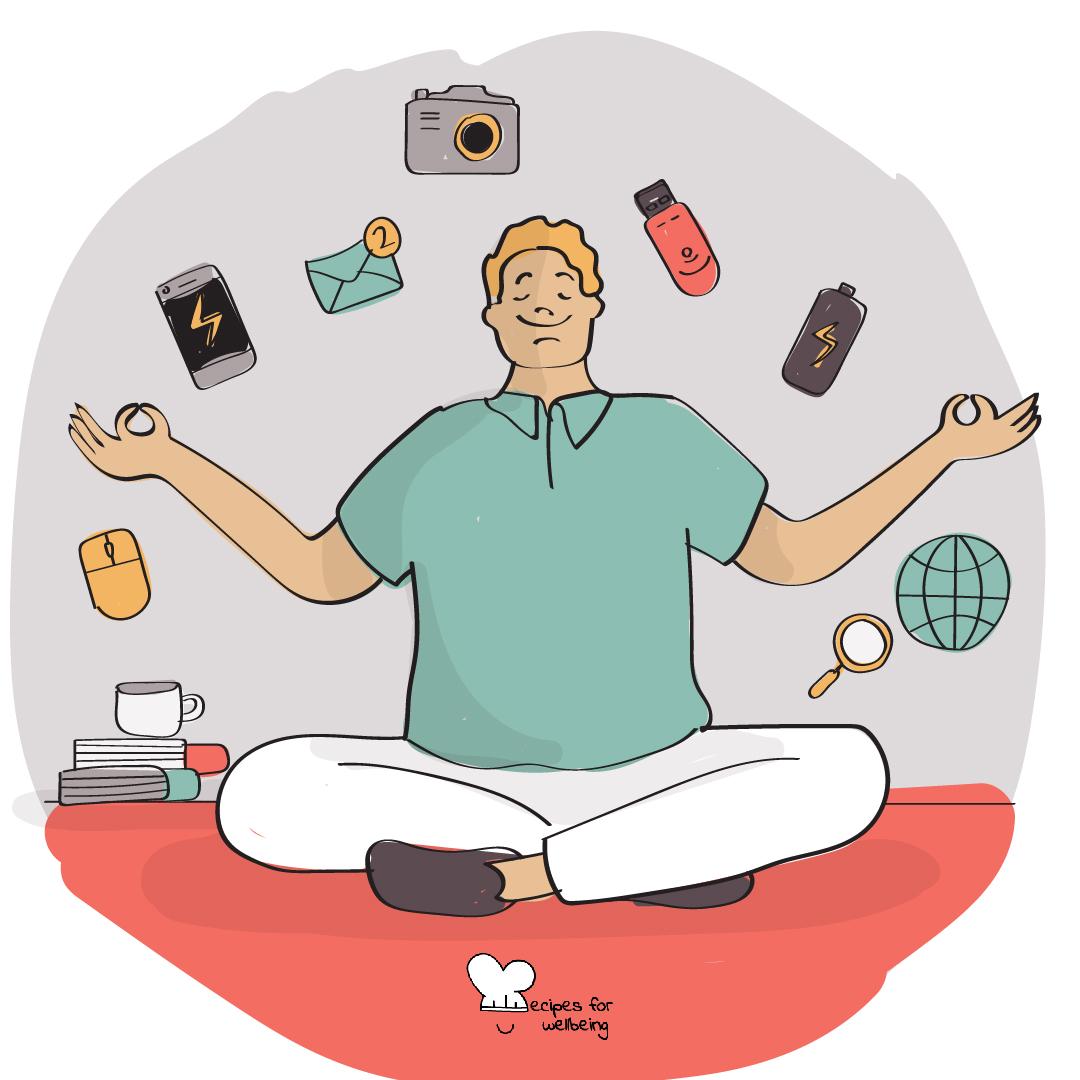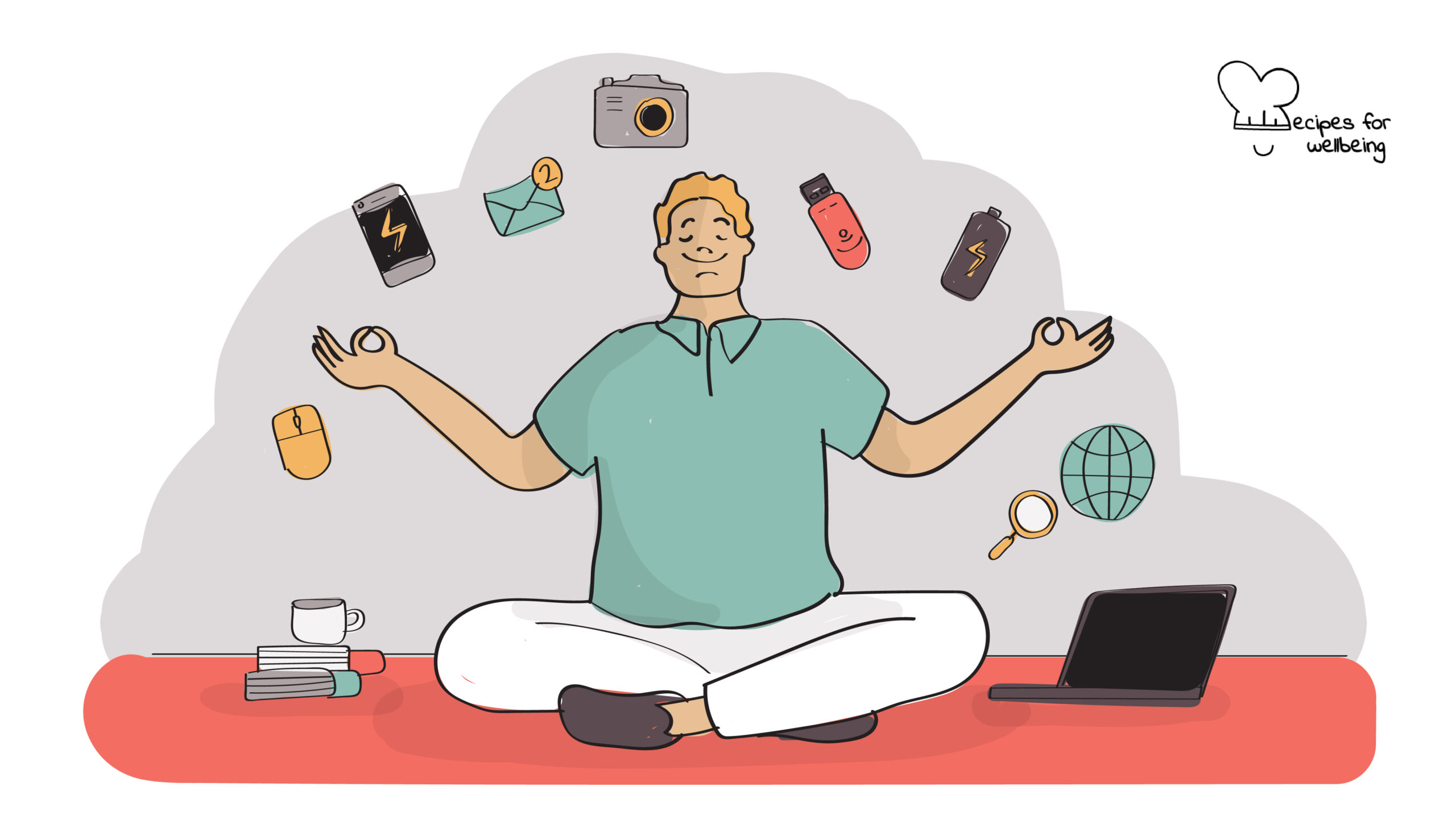
Mindful tech meditation
Often he who does too much does too little. ―Italian Proverb
👥 Serves: 1 person, 11-25 people, 2-10 people, 26-40 people, 41+ people
🎚 Difficulty: Easy
⏳ Total time: 1-10 minutes
🥣 Ingredients: A quiet place with no distractions
🤓 Wholebeing Domains: Awareness, Digital Consciousness
💪 Wholebeing Skills: Breathing, Digital agency, Digital discernment, Mindfulness, Non-attachment

Mindful tech meditation
📝 Description
Developing a healthier relationship with all things tech.
Constant notifications and pings might paint a picture that there is always something important for you to attend to. But in doing so, your focus is scattered around in an overwhelming attempt to react to the latest message on top of everything else that is already going on for you. But technology does not have to steal your attention at all times. The following brief meditation practice helps you regain control of your mind and help you be less reactive and more responsive to tech.
👣 Steps
Step 1 – Sit (1’)
Sit in a comfortable position, keeping your back straight yet relaxed and resting your hands on your legs or your lap.
Step 2 – Breathe deeply (1’)
When you are ready, close your eyes and focus your attention on your body breathing. Take a few deep breaths: in through your nose and out through your mouth. As you breathe in, notice how your chest expands and your lungs fill with air. As you breathe out, notice how your body softens. After a few deep breaths, return your breath to its natural rhythm, in and out through the nose.
Step 3 – Settle in (1’)
Now gently shift your awareness to the contact point between you and the chair or the floor beneath you. Feel the weight of your body pressing down into the seat beneath you. Slowly settle into this space around you, just enjoying not having to react or respond to any technology of any kind. Simply enjoy the feeling of having paused for a moment.
Step 4 – Feel the body (2’)
As you sit there, start to notice how the body feels right now. Is there a sense of heaviness or tiredness in the body? Or is there a sense of lightness? Movement or stillness?
Now starting from the top of the head, gently scanning down through your body. Gently notice how different parts of the body feel… building up a picture of how the body feels right now.
If at any stage the mind wanders off, just acknowledge it with kindness and come back to the feeling of scanning down towards your toes.
Step 5 – Rising and falling (1’)
As you scan through your body, start to notice the movement of your breath in your body. Just notice the rising and falling sensations, without forcing the breath in any particular way. You may wish to place your hands over your stomach if you struggle to feel the rising and falling sensations.
Start to notice the rhythm of your breathing: is your breath long or short, deep or shallow? You have nothing else to do but follow the rising and falling sensations of your breath. If it is easier, you can count 1 when you breathe in, 2 when you breathe out, until you reach 10. Then start again at 1.
Step 6 – Notice (3’)
As you are following the breath, the mind will occasionally wander. Whenever you realise you got distracted, pause for a moment to notice that your mind was thinking and bring your attention back to the breath.
Step 7 – Closing (1’)
You are training your mind not to be reactive and to pause instead, to notice you were thinking. Let go of the thought and come back to the breath again.
Slowly bring your attention back to your body, feeling your mind a little less reactive perhaps and more in control of the technology around you. Become aware again of your body sitting; notice any sounds around you; and when you are ready, gently open your eyes again.

